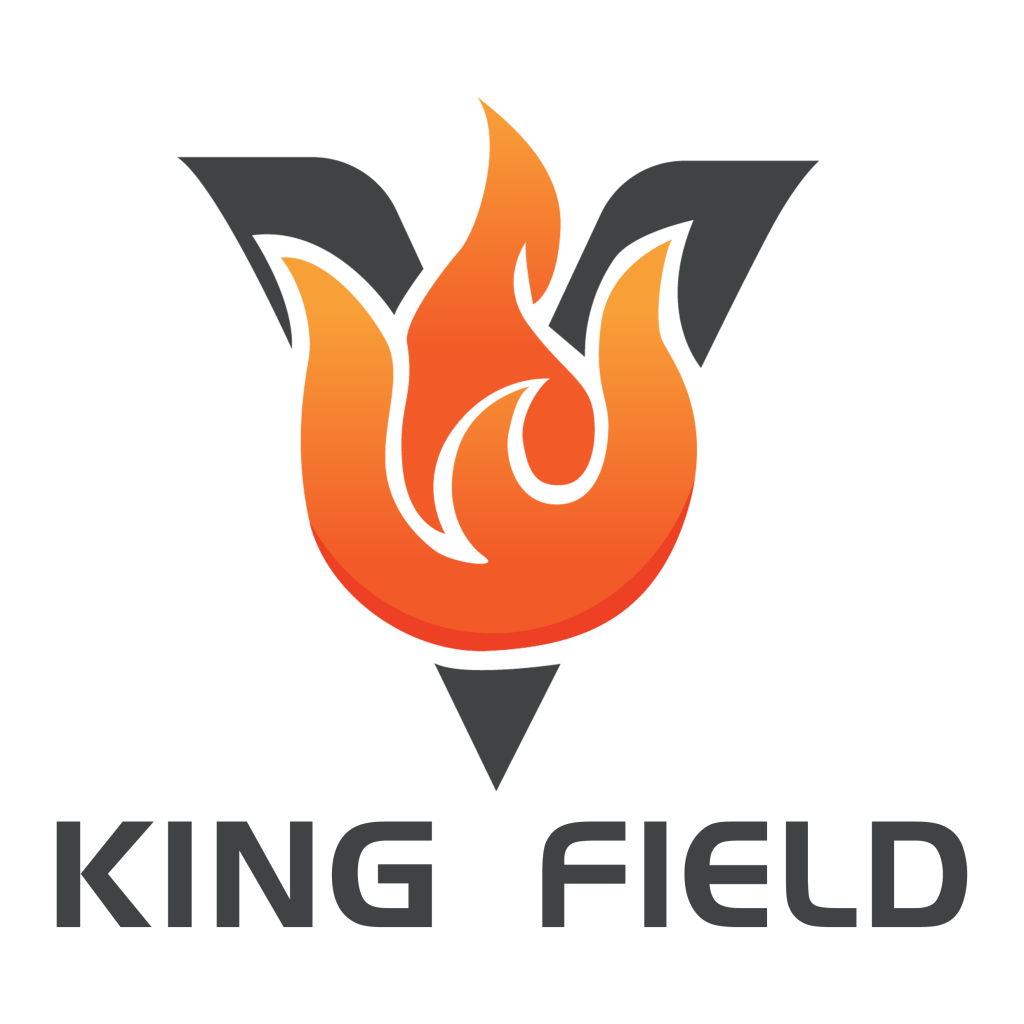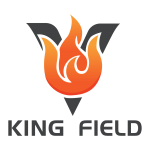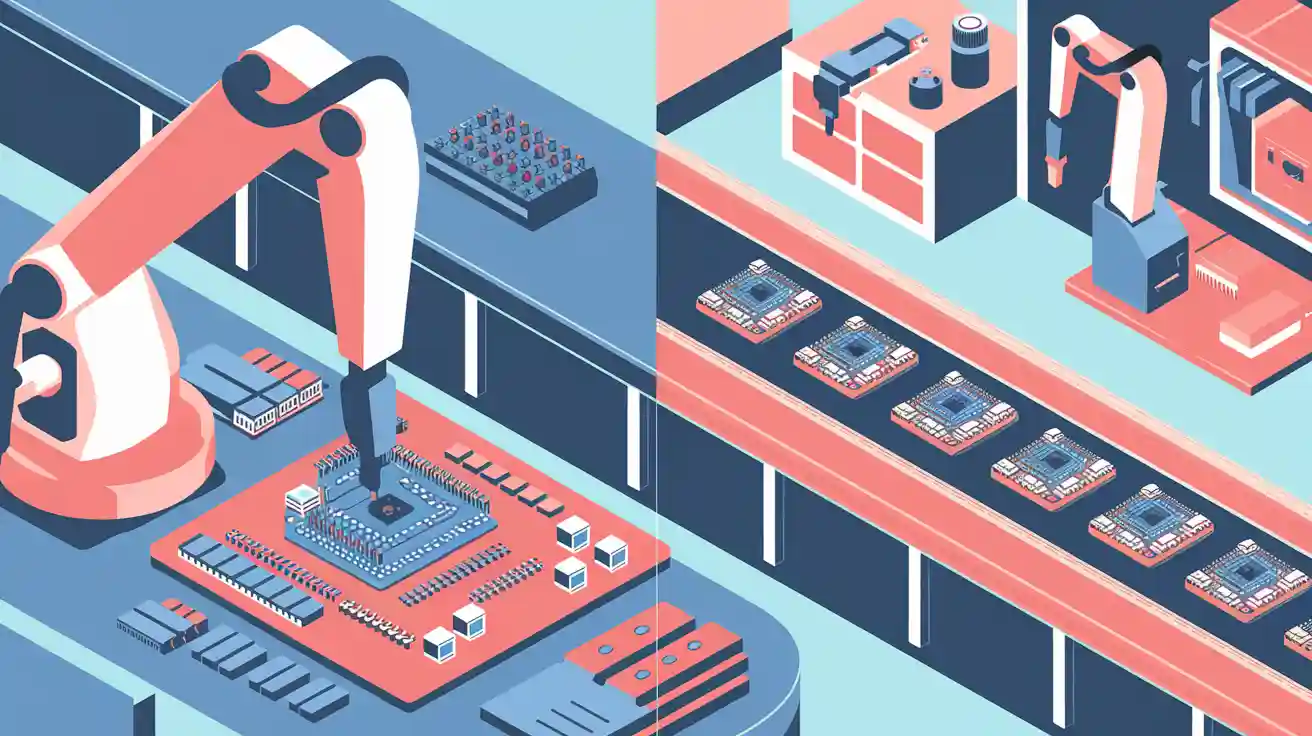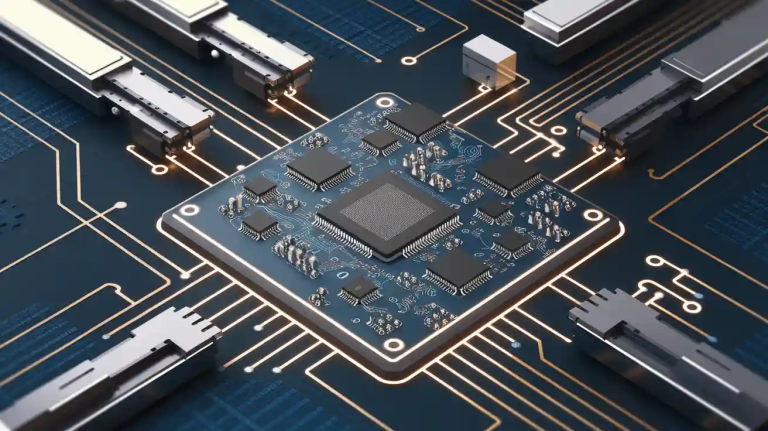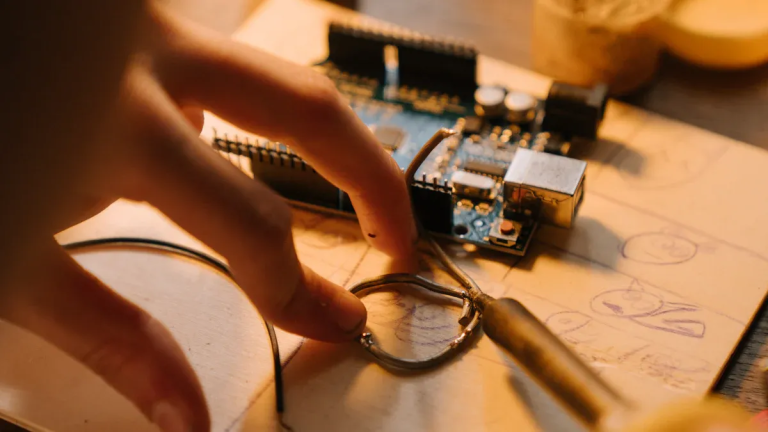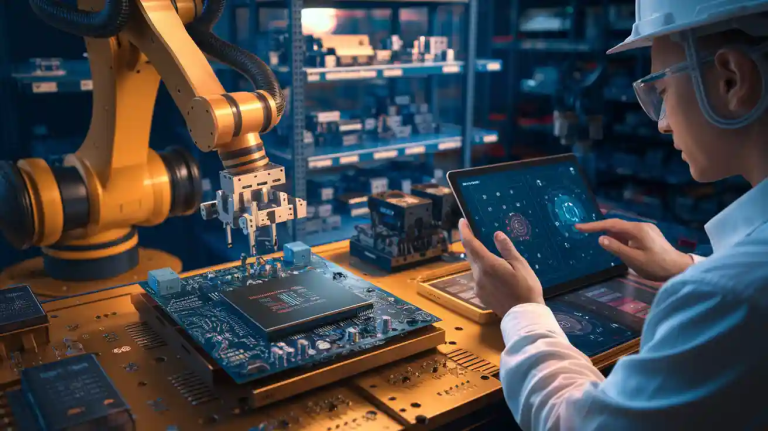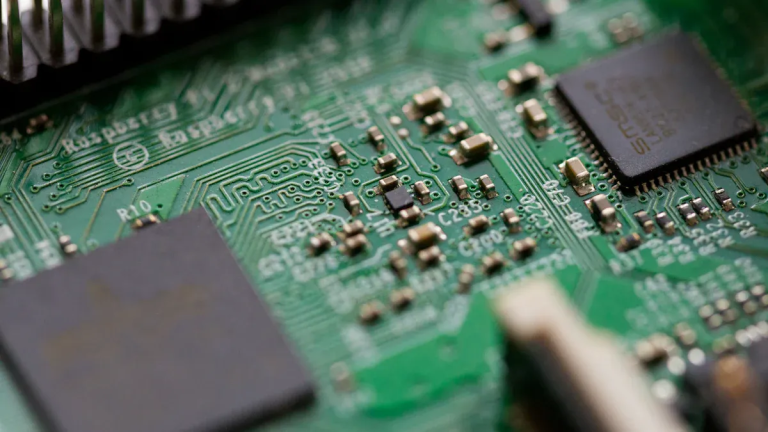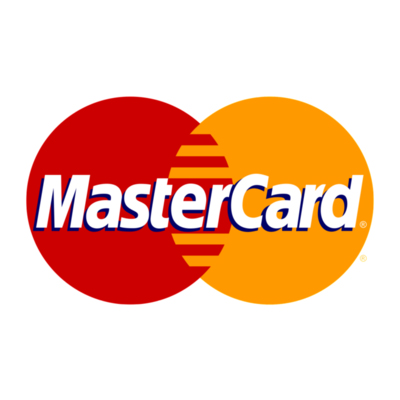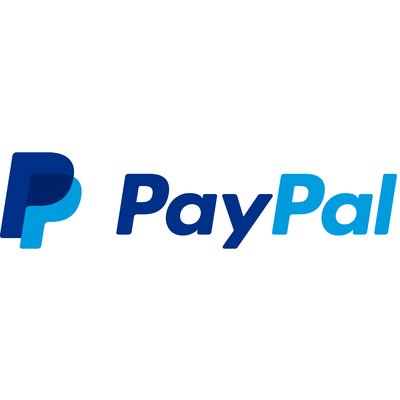High-Mix Low-Volume PCBA focuses on producing diverse electronic assemblies in smaller quantities. This technique matters because it supports businesses aiming to meet specific market demands without overproducing. Unlike high-volume manufacturing, it offers flexibility, enabling you to test products in the market with minimal financial risk. Its adaptability gives you a competitive edge in dynamic industries.
Key Takeaways
- High-Mix Low-Volume PCBA is flexible and customizable. It helps businesses adjust fast to market changes.
- This method allows quick prototyping. Companies can test products cheaply and stay ahead.
- Fields like aerospace and medical devices use it for special parts. It makes small amounts with great quality and follows rules.
Understanding High-Mix Low-Volume PCBA
Definition and core features
High-Mix Low-Volume PCBA refers to a manufacturing approach designed to produce a wide variety of printed circuit board assemblies in smaller quantities. This method prioritizes customization and flexibility, making it ideal for businesses that need to adapt quickly to market demands. Unlike traditional high-volume production, this technique focuses on delivering tailored solutions without compromising efficiency.
| Core Feature | Description |
|---|---|
| Customization | HMLV production emphasizes the need for product differentiation and personalization. |
| Flexibility | Manufacturers must accommodate variability in product routing and production processes. |
| Automation | Robotics and automation play a critical role in addressing production challenges. |
These features enable you to meet specific customer requirements while maintaining high-quality standards.
Industries and applications
High-Mix Low-Volume PCBA serves industries where innovation and adaptability are essential. Sectors such as aerospace, medical devices, and industrial automation rely heavily on this approach. For example, in the medical field, manufacturers often produce highly specialized equipment in limited quantities to meet stringent regulatory standards. Similarly, the aerospace industry benefits from the ability to create customized components for unique applications.
Benefits driving its popularity
Several factors contribute to the growing popularity of High-Mix Low-Volume PCBA:
- Manufacturers in regions like the Pearl Delta Region of China have demonstrated how adaptive techniques combine flexibility with efficiency.
- Investments in customer, supplier, and labor relations enhance adaptability to changes in design and technology.
- Economies of scope are achieved through robust organizational routines rather than relying solely on low-cost labor or advanced equipment.
These benefits make High-Mix Low-Volume PCBA a preferred choice for businesses aiming to stay competitive in dynamic markets.
Overview of Other Manufacturing Techniques
High-Volume Low-Mix manufacturing
High-Volume Low-Mix manufacturing emphasizes efficiency and cost reduction by producing large quantities of a limited range of products. This approach suits industries where demand for standardized goods remains consistent. For example, automotive manufacturers often rely on this technique to produce high-demand components like engine parts.
Key characteristics include:
- Automation: Machines handle repetitive tasks, ensuring speed and consistency.
- Economies of scale: Bulk production reduces per-unit costs as output increases.
- Limited flexibility: Customization options are minimal due to the focus on standardization.
| Industry | Example Description |
|---|---|
| Aerospace | Boeing and Airbus use high-volume methods for standardized components. |
| Automotive | Mass production of engine parts and tires for mainstream vehicles. |
This method excels in reducing costs but struggles to adapt to fluctuating market demands or personalized orders.
Mass production
Mass production focuses on creating identical products in enormous quantities. It’s ideal for industries like consumer electronics and packaged goods, where uniformity and affordability drive success.
Key efficiency factors include:
- Readiness: Ensuring equipment and materials are prepared for uninterrupted production.
- Changeover efficiency: Minimizing downtime during process adjustments.
- Defects in process: Reducing losses from quality issues.
| Factor | Description |
|---|---|
| Equipment Failure | Losses due to unexpected breakdowns. |
| Reduced Speeds | Operating below optimal production rates. |
Mass production delivers unmatched scalability but sacrifices adaptability and customization.
Custom or bespoke manufacturing
Custom manufacturing prioritizes personalization, tailoring products to meet specific customer needs. This technique suits industries like luxury goods and medical devices, where uniqueness and precision are paramount.
Advantages include:
- Customization: Products align with individual specifications.
- Accelerated prototyping: Faster development cycles for unique designs.
- Cost-effectiveness: Consigned assembly programs reduce ownership costs.
However, bespoke manufacturing often incurs higher costs and longer lead times compared to High-Mix Low-Volume PCBA. You’ll find this approach excels in scenarios requiring exclusivity and high-quality craftsmanship.
Key Differences Between High-Mix Low-Volume PCBA and Other Techniques
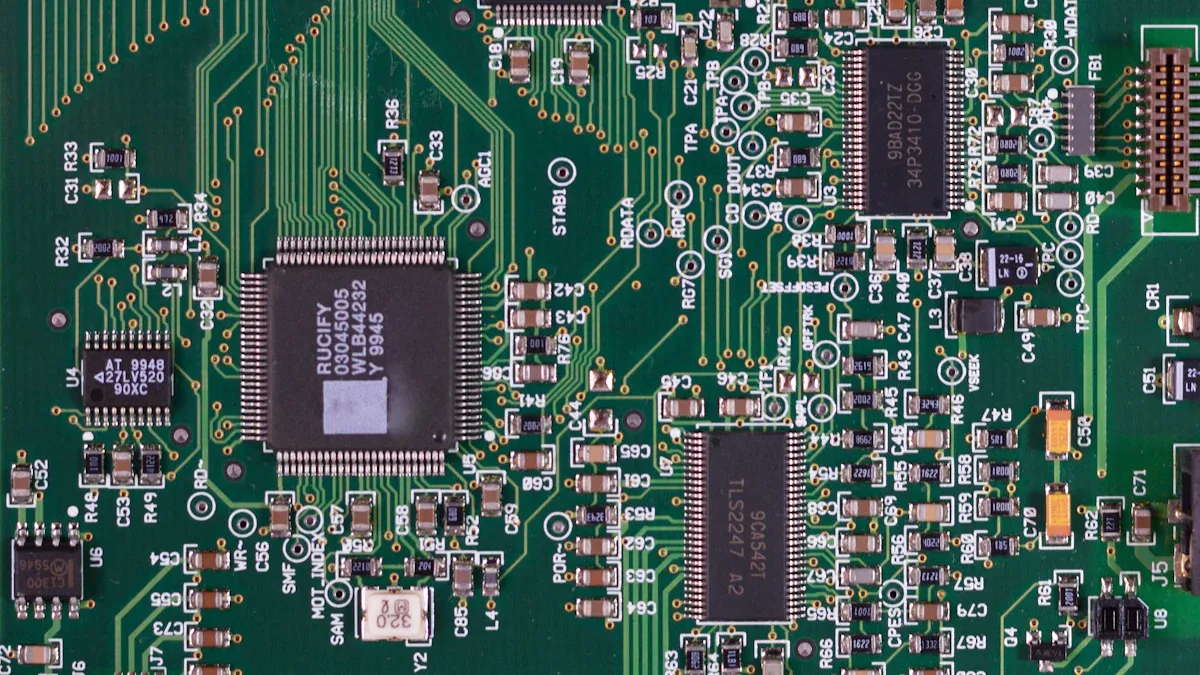
Cost implications
The cost structure of High-Mix Low-Volume PCBA differs significantly from other manufacturing techniques. While it offers flexibility and customization, the associated costs can vary based on order volume and production complexity. For instance, prototyping or producing small batches often incurs higher costs per unit due to setup expenses and shorter production runs. In contrast, mass production benefits from economies of scale, reducing per-unit costs as volumes increase.
| Order Volume | Typical Application | Cost per PCB | Setup Costs | Manufacturing Time |
|---|---|---|---|---|
| Low Volume (1-10 units) | Prototyping, Proof of Concept | High | Relatively High | Variable, Typically Faster |
| Medium Volume (10-100 units) | Small Production Runs, Initial Market Release | Moderate | Moderate | Moderate |
| High Volume (1000+ units) | Mass Production | Low | Low (Amortized) | Longer Lead Times |
You should consider these cost implications when deciding between High-Mix Low-Volume PCBA and other techniques. If your project requires frequent design changes or small production runs, the higher upfront costs may be justified by the flexibility and speed offered.
Flexibility and adaptability
High-Mix Low-Volume PCBA stands out for its ability to adapt to diverse production needs. Unlike high-volume manufacturing, which relies on standardized processes, this approach accommodates frequent design changes and varying production requirements. For example, the production line for High-Mix Low-Volume PCBA often involves dynamic resource allocation and specialized employee training to handle multiple processes.
| Strategy | Description |
|---|---|
| Production Line Configuration | Dynamic balancing of resources and production efficiency due to varying procedures. |
| Employee Training | Technicians trained to handle multiple processes, enhancing production flexibility. |
| Production Methods | Use of cell line production to minimize personnel changes and optimize time. |
Additionally, techniques like SMT (Surface Mount Technology), DIP (Dual In-line Package), and wiring harness assembly contribute to its adaptability. This flexibility makes High-Mix Low-Volume PCBA ideal for industries requiring frequent product updates or customization.
Tip: If your business operates in a fast-paced market, the adaptability of High-Mix Low-Volume PCBA can help you stay ahead of competitors.
Scalability and production efficiency
Scalability is a key challenge for High-Mix Low-Volume PCBA compared to mass production. While it excels in producing small batches with high precision, scaling up to meet large-volume demands can be less efficient. Mass production, on the other hand, achieves high efficiency through automation and standardized processes, making it suitable for large-scale operations.
However, High-Mix Low-Volume PCBA compensates for its scalability limitations with advanced automation and robotics. These technologies enhance throughput and accuracy, ensuring consistent quality even in smaller production runs. Integration of AI and machine learning further optimizes processes, reducing waste and increasing yield rates.
If your project requires a balance between precision and efficiency, High-Mix Low-Volume PCBA offers a viable solution. Its focus on quality and adaptability ensures that even small-scale production meets industry standards.
Suitability for various industries
High-Mix Low-Volume PCBA is particularly suited for industries that demand innovation, customization, and precision. Sectors like aerospace, medical devices, and industrial automation benefit from its ability to produce specialized components in limited quantities. For example:
- Advanced automation and robotics enhance productivity and accuracy, crucial for aerospace and medical applications.
- Miniaturization techniques support the production of smaller components, essential for modern electronic devices.
- Flexible manufacturing systems enable quick adaptation to changing production needs, making it ideal for dynamic industries.
- Enhanced traceability through data analytics ensures real-time performance monitoring and quality control.
These features align with the needs of industries that prioritize customization and high-quality standards. By adopting High-Mix Low-Volume PCBA, you can meet specific market demands while maintaining a competitive edge.
Advantages and Challenges of High-Mix Low-Volume PCBA
Major advantages
High-Mix Low-Volume PCBA offers several advantages that make it a preferred choice for businesses in dynamic industries. Its flexibility allows you to adapt quickly to changing customer demands and market trends. This adaptability ensures that you can produce customized products without compromising quality. Additionally, the approach supports innovation by enabling rapid prototyping and testing of new designs. You can bring products to market faster, gaining a competitive edge.
Another significant advantage lies in its ability to handle complex assemblies. Advanced automation and robotics streamline production processes, ensuring precision and consistency. This is particularly beneficial for industries like aerospace and medical devices, where accuracy is critical. Furthermore, the method minimizes waste by optimizing resources, which helps you achieve cost efficiency even in small production runs.
Common challenges
Despite its benefits, High-Mix Low-Volume PCBA comes with challenges that you must address. Demand forecasting can be difficult due to data scarcity, especially for new or seasonal products. Volatility in customer preferences and external factors adds to this complexity. Managing variability across product families and SKUs further complicates planning.
In addition, the electronics manufacturing industry faces challenges such as responding to rapidly changing business requirements and managing increasing factory complexity. Achieving financial growth targets can also be tough, especially when margins are declining. These issues require robust strategies and advanced tools to ensure smooth operations.
Scenarios where it excels
High-Mix Low-Volume PCBA excels in scenarios requiring customization, precision, and adaptability. If your business operates in industries like aerospace, medical devices, or industrial automation, this approach is ideal. It supports the production of specialized components in limited quantities, meeting stringent quality standards. For example, it enables the creation of highly customized medical equipment tailored to specific patient needs.
This method also shines in markets with frequent design changes or short product lifecycles. Its flexibility allows you to update designs quickly, ensuring that your products remain relevant. By adopting High-Mix Low-Volume PCBA, you can stay competitive in fast-paced and innovation-driven industries.
How to Choose the Right Manufacturing Approach
Factors influencing the decision
Choosing the right manufacturing approach requires careful consideration of several factors. These factors ensure that your production strategy aligns with your business objectives and operational capabilities. Here are some critical elements to evaluate:
- Business Goals Alignment: Your manufacturing approach should directly support your strategic objectives. For instance, if your goal is to deliver highly customized products, a High-Mix Low-Volume PCBA approach may be ideal.
- Stakeholder Engagement: Involving stakeholders at all levels fosters ownership and ensures alignment across departments. This collaboration helps you address challenges and implement solutions effectively.
- Continuous Improvement: Measuring performance through key metrics like cost, quality, and speed allows you to identify areas for improvement. World-class manufacturers often leverage digital technologies to drive incremental changes that enhance operational efficiency.
To make informed decisions, you should also focus on three essential steps:
- Define clear goals for your manufacturing process.
- Establish accurate methods to measure progress.
- Develop efficient reporting systems to track performance.
By addressing these factors, you can create a robust framework for selecting the most suitable manufacturing technique.
Aligning techniques with business goals
Aligning your manufacturing approach with your business goals ensures that your operations contribute to long-term success. Each technique offers unique advantages, and selecting the right one depends on your priorities. For example, if your focus is on reducing costs and maximizing efficiency, mass production or High-Volume Low-Mix manufacturing might be the best fit. However, if you prioritize flexibility and innovation, High-Mix Low-Volume PCBA could be the optimal choice.
Consider the following examples of alignment:
| Technique | Example | Outcome |
|---|---|---|
| SMED | An automotive parts manufacturing plant reduced tool changeover time to less than 10 minutes. | Production capacity increased and downtime costs reduced by 50%. |
| JIT | A food processing plant optimized inventory management to receive raw materials just in time. | Reduced storage costs and minimized food waste. |
| Kaizen | A textile factory involved operators in identifying improvements to reduce fabric and energy waste. | Achieved a 10% reduction in material wastage and significant energy savings. |
These examples highlight how aligning manufacturing techniques with specific goals can yield measurable improvements. By understanding your objectives, you can select a method that enhances productivity, reduces costs, or supports innovation.
Practical examples of decision-making
Practical decision-making involves analyzing your unique requirements and matching them with the strengths of different manufacturing techniques. For instance, if your business operates in a fast-paced industry like consumer electronics, you may need a method that supports frequent design changes. High-Mix Low-Volume PCBA excels in such scenarios by offering flexibility and adaptability.
On the other hand, industries like automotive or packaged goods often benefit from mass production due to its scalability and cost efficiency. For example, a car manufacturer producing standardized engine parts can achieve significant savings through economies of scale. Similarly, a food company using Just-In-Time (JIT) techniques can minimize waste and optimize inventory management.
When making your decision, consider the following steps:
- Evaluate your production needs, including volume, customization, and lead times.
- Assess the capabilities of each manufacturing technique in meeting these needs.
- Factor in long-term goals, such as sustainability or market expansion.
By following this approach, you can ensure that your manufacturing strategy supports your business objectives while addressing operational challenges.
Understanding the differences between High-Mix Low-Volume PCBA and other manufacturing techniques helps you make informed decisions. Each method offers unique advantages, but aligning the approach with your project needs ensures efficiency and success. Evaluate your production goals, market demands, and scalability requirements to select the most suitable manufacturing strategy.
FAQ
What makes High-Mix Low-Volume PCBA different from mass production?
High-Mix Low-Volume PCBA focuses on customization and flexibility for small batches. Mass production prioritizes efficiency and cost reduction by producing large quantities of standardized products.
Can High-Mix Low-Volume PCBA handle frequent design changes?
Yes, it excels at adapting to design changes. Its flexible processes and dynamic resource allocation make it ideal for industries requiring frequent updates or product customization.
Is High-Mix Low-Volume PCBA suitable for startups?
Absolutely! It allows startups to test prototypes and small batches without significant financial risks. This approach supports innovation and helps businesses adapt to evolving market demands.
Tip: Evaluate your production needs and goals to determine if High-Mix Low-Volume PCBA aligns with your business strategy.
